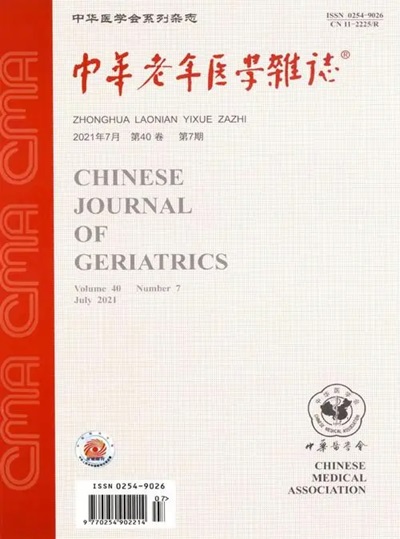Effects of exogenous ghrelin on muscle atrophy in elderly mice
引用次数: 0
Abstract
Objective To investigate the effects of acylated ghrelin and des-acylated ghrelin on skeletal muscle atrophy in elderly mice. Methods Eighteen-month-old wild type(WT)mice and ghrelin-/- mice were selected to perform body composition analysis and wheel-running test under conditions of feeding versus fasting.The gene expressions of myogenic regulatory factors including muscle differentiation factor MyoD, myogenin, atrogin-1, muscle-specific RING finger protein 1(muRF-1), and insulin growth factor 1(IGF-1)in mice gastrocnemius muscle were detected by realtime polymerase chain reaction(PCR). Results The locomotor activity during the wheel-running test were significantly lower in elderly ghrelin-/- mice than in elderly WT mice(3 929±263 times/h vs.5359±601 times/h, t=4.87, P 0.05). After 48 h fasting, the decrements of body weight, fat and muscle weight were more in ghrelin-/- mice than in WT mice(P<0.05). In fasting old ghrelin-/- mice, the gene expressions of MyoD and myogenin were increased(improved)(t=232.00 and 121.00, P<0.05), and the gene expressions of atrogin-1 and muRF-1 were decreased(improved)(t=30.40 and 54.00, P<0.05)after treatment with both acylated ghrelin and desacylated ghrelin. Conclusions The acylated ghrelin and desacylated ghrelin may play protective roles in age-related muscle atrophy. Key words: Ghrelin; Muscular atrophy外源性胃饥饿素对老年小鼠肌肉萎缩的影响
目的研究酰化胃饥饿素和去酰化胃紧张素对老年小鼠骨骼肌萎缩的影响。方法选择18个月大的野生型(WT)小鼠和胃饥饿素-/-小鼠,在喂食和禁食条件下进行身体成分分析和转轮运动试验。采用实时聚合酶链反应(PCR)检测肌肉分化因子MyoD、肌生成素、萎缩蛋白-1、肌特异性环指蛋白1(muRF-1)和胰岛素生长因子1(IGF-1)等肌源性调控因子在小鼠腓肠肌中的基因表达。结果老年ghrelin-/-小鼠在轮动试验中的运动活性显著低于老年WT小鼠(3929±263次/h与.5359±601次/h,t=4.87,P 0.05)。禁食48h后,ghrelin--/-小鼠的体重、脂肪和肌肉重量的下降幅度大于WT小鼠(P<0.05),酰化和去酰化胃饥饿素处理后,MyoD和肌生成素的基因表达增加(改善)(t=232.00和121.00,P<0.05),而atrogin-1和muRF-1的基因表达减少(改善),t=30.40和54.00,P<0.05)。结论酰基化胃促生长素和去酰化胃促肽可能对年龄相关性肌肉萎缩起保护作用。关键词:Ghrelin;肌肉萎缩
本文章由计算机程序翻译,如有差异,请以英文原文为准。
求助全文
约1分钟内获得全文
求助全文

 求助内容:
求助内容: 应助结果提醒方式:
应助结果提醒方式:


